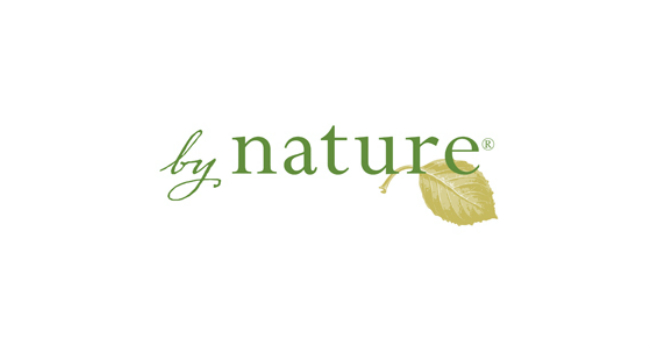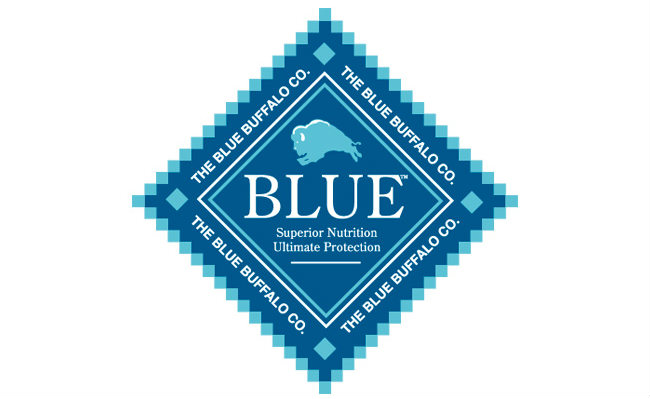Fish ingredients have become very popular in cat food, so we decided to perform this Eukanuba Adult Entree with Pacific Salmon Cat Food review for those of you who want to feed a fish based diet to your cat. While there are many cat food blends that offer fish as a source of protein, it is important to research several different blends before purchasing. Not all cat food blends are made equal!
Eukanuba is owned by Procter & Gamble and uses a manufacturing plant in Leipsic, Ohio. In 1969, Paul Iams wanted to find a name to differentiate the new formula from other Iams pet food products. Iams chose to name this new formula “Eukanuba”, a term originated by jazz era personality Hoagy Carmichael, meaning “the tops” or “something supreme” (read more on Wikipedia).
Ingredients in Eukanuba Adult Entree with Pacific Salmon Cat Food
Meat Broth, Chicken, Meat By-Products, Chicken By-Products, Salmon, Natural Flavor, Ocean fish, Brewers Rice, Carrots, Broccoli, Dried Beet Pulp, Sweet Potatoes, Flax Meal, Potassium Chloride, Salt, Guar Gum, Sun cured Alfalfa, Brewers Dried Yeast, Titanium Dioxide, Dried Egg Product, Minerals (Manganese Sulfate, Zinc Oxide, Potassium Iodide, Copper Sulfate), Carrageenan, Choline Chloride, Vitamins (Vitamin A Acetate, Niacin, Calcium Pantothenate, Pyridoxine Hydrochloride (source of vitamin B6, Biotin), DL-Methionine, Vitamin B12 Supplement, Vitamin D3 Supplement, Riboflavin Supplement (source of vitamin B2), Menadione Dimethylpyrimidinol Bisulfite (source of vitamin K3), Folic Acid), Taurine, Fructooligosaccharides, Iron Oxide, Thiamine Mononitrate (source of vitamin B1), Vitamin E Supplement.
Top 5 Ingredients Breakdown
Whenever you are reviewing a commercial cat food blend, it is good practice to pay special attention to the first 5 ingredients listed. These ingredients make up the vast majority of the nutritional content in the food. Let’s take a look at the top 5 ingredients in this cat food.
Meat broth
Used as a source of moisture and flavor, meat broth is normally considered a higher alternative to plain water, even though it doesn’t provide much nutritional value. It’s unfortunately this broth is from an unnamed meat source. Normally, we like to see named meat sources for the broth such as chicken broth or turkey broth. In this case, we are left guessing what meat source is used to create the broth. I can literally be from almost any animal and that is a bit concerning.
Chicken
Chicken is a very popular ingredient for pet food and in this case, they are referring to whole chicken. This is a very high quality meat source and we are pleased to see it listed. However, whole chicken loses about 80% of its content during the cooking process since the majority of whole chicken is water. After the cooking process is complete, the amount of whole chicken remaining is substantially reduced. Therefor, while whole chicken is a great source of meat protein, this ingredient alone is not enough to provide sufficient levels of meat protein in a cats diet.
Meat by-products
This is about the lowest quality meat product that can be included in any cat food. We are very disappointed to see this ingredient listed. Meat By-Products are parts of slaughtered animals including the lungs, spleen, kidneys, brain, liver, blood, bone, partially defatted low-temperature fatty tissue, and stomach and intestines freed of their contents. In addition, meat by-products can also legally contain animals that were dead, dying, or diseased before slaughtering. Many times, animals with tumors are ground and processed, meaning, ground up cancerous tumors could legally be included in your pets food. While unlikely, it can even legally include road kill. Perhaps worst of all, this ingredient COULD include meat from euthanized cats, dogs, horses, or other animals. Meat by-product is an unnamed meat source and you never know for sure where it is coming from or what animals are being used. Also note that meat by-products are not approved for human consumption. It consists of unwanted parts only acceptable in the pet food or feed industries. This is one of the most controversial meat ingredients that could be included and there is much to be concerned about when purchasing any pet food that includes meat by-products.
Chicken By-Products
While this ingredient does provide a high amount of meat protein, this meat source is considered to be of lower quality than many other meat sources. Chicken By-Product is produced through a process of cooking, drying and separation of fats and proteins from animal carcasses. It contains a combination of meat (or cuts or parts) including lungs, spleen, kidneys, brain, livers, blood, bone, necks, undeveloped eggs and intestines. Usually, by-products are the “left overs” that can’t be used for human food consumption. The greatest fault of this ingredient is the same trait that makes it so affordable and so commonly found in pet foods. The unpredictability of what might (or might not) be included.
Salmon
Salmon is an excellent source of high quality proteins for cats and is extremely rich in healthy Omega 3 and Omega 6 fatty acids. Some people worry about mercury levels in fish. It’s true that all fish contains some degree of mercury, the level in salmon is much lower than other types of fish and the FDA doesn’t believe it is cause for concern. Most salmon in cat food is farmed salmon, but higher end cat food (especially those labeled “natural”) can often times be fished from natural lakes and streams. The biggest problem with fish ingredients, including salmon, is if the fish includes an antioxidant called ethoxyquin (EMQ). It is believe that ethoxyquin could be very harmful to cats and other animals. Always make sure you are using “Ethoxyquin free” cat food blends when they include fish ingredients. When in doubt, call the customer service number and ask.
Additional Ingredients Of Interest In Eukanuba Adult Entree With Pacific Salmon Cat Food
Broccoli
This is a very rich source of vitamin C, soluble fiber, calcium as well as other nutrients. While not dangerous to your cat, it has been associated with an increase in flatulence in many cats.
Carrots
A good source of carbohydrates, vitamins, and minerals, carrots are becoming more common in pet foods. This ingredient is also known to boost the immune system and help promote healthy eyes in cats as well as providing a good source of fiber.
Sweet potato
Sweet potatoes provide a great source of potassium, vitamin B, and beta-carotene. This ingredient also provides antioxidant agents that specifically help to fight against cancer causing agents. This is a higher quality ingredient with no known negative side-effects.
Allergy Risk Associated With Eukanuba Adult Entree With Pacific Salmon Cat Food
Fortunately, this cat food is free from the main allergy causing ingredients. Every cat is unique in their own way and your cat may suffer from a rare food allergy, but in general, we believe the allergy risk associated with this food is quite low.
Conclusion
We have mixed feelings about Eukanuba ADult Entree with Pacific Salmon. For starters, there isn’t actually much salmon in this blend. Since the salmon included is whole salmon, after the cooking process has been complete, this ingredient likely wouldn’t even be listed in the top 5. So if you’re looking for a true salmon based cat food, we do not recommend this blend. In addition, we see some very generic ingredients used. The top ingredient is meat broth which is an unnamed source. “Meat” can come from just about any animal. Further down the list, we see meat by-product and that is about the lowest quality meat on the market. While it doesn’t automatically mean they use poor quality meat, they legally can use low quality meat under the guise of that ingredient name. This includes animals who were sick, dead, dying or diseased before slaughtering, including the slaughter of animals with tumors and even roadkill may be legally used (though unlikely). Many of the named meat sources are by-products as well. Generally named meat by-products aren’t nearly as low in quality as unnamed meat by-products, they still aren’t considered to be the highest quality meat sources available.
While many cat owners report great results with this food, we are not all that impressed. Judging by the ingredients, we believe this is a below average quality cat food. Do you agree? Disagree? Let us know in the comment section below.





 al prey for cats in the wild, they do supply a healthy amount of protein and extremely beneficial fatty acids as well as other nutrients cats can benefit from. Some cat owners worry about the mercury level that naturally occurs in fish, but the FDA continues to state that the mercury levels in fish are safe for both humans and pets. There is also some concern about where this ingredient might be sourced from. If the fish contains ethoxyquin, this is definitely something you would not want to feed to your cat, but we are unable to verify whether this ingredient contains ethoxyquin or not. Also, most of the time, fish used in pet food is the fish that has been deemed unfit for human consumption for whatever reason. Nonetheless, this ingredient does provide a fairly high amount of healthy nutritional benefit.
al prey for cats in the wild, they do supply a healthy amount of protein and extremely beneficial fatty acids as well as other nutrients cats can benefit from. Some cat owners worry about the mercury level that naturally occurs in fish, but the FDA continues to state that the mercury levels in fish are safe for both humans and pets. There is also some concern about where this ingredient might be sourced from. If the fish contains ethoxyquin, this is definitely something you would not want to feed to your cat, but we are unable to verify whether this ingredient contains ethoxyquin or not. Also, most of the time, fish used in pet food is the fish that has been deemed unfit for human consumption for whatever reason. Nonetheless, this ingredient does provide a fairly high amount of healthy nutritional benefit.
